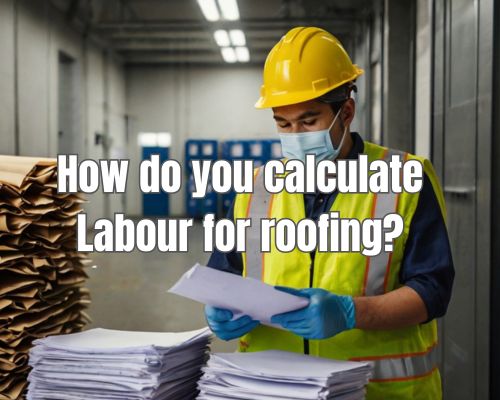How Do You Calculate Metal Roofing?

Essential Steps and Tips
Calculating the amount of metal roofing you need is an essential step in planning your project.
To determine the amount of metal panels required, you need to measure the length and width of the roof and divide by the width of the metal panels.

Common panel widths are 24 inches for standing seam metal and 36 inches for corrugated metal.
Consider the pitch of your roof, which is the ratio of its vertical rise to its horizontal span.
Knowing the pitch can help you determine the roofing material’s suitability and the necessary area coverage. Common pitches like 4/12 or 6/12 will influence the final area calculations.
Budgeting is also crucial. Prices for metal roofing vary from $4.5 to over $9 per square foot, depending on the type of metal and complexity of installation.
“By accurately estimating these costs, you can ensure your project stays within budget while achieving the desired aesthetic and durability.” said Charles Jimerson from CJ Commercial Roofing NJ.
Understanding Metal Roofing Components and Measurements
When calculating metal roofing, it’s essential to account for various factors, including the types of materials used and the measurements of your roof. With Charles Jimerson from CJ Commercial Roofing NJ, this section breaks down key aspects and provides valuable information to help navigate this task.
Key Measurements for Metal Roofing
Roof Pitch: The pitch, or slope, of your roof is crucial when determining material needs. Measure the vertical rise over a 12-inch horizontal span.
Length and Width: Measure these dimensions by taking the distance from one edge of the roof to the other for both length and width. Accurate measurements ensure proper material calculation.
Area Calculation: Calculate by multiplying length by width for each section. Sum the areas of all sections to get the total roof area in square footage. Use a metal roof calculator or an equivalent panel calculator for accuracy.
Standing Seam Roofing: This method requires specific consideration due to its unique design. Measure from seam to seam and account for overlaps.
Materials and Types of Metal Roofing
Steel: Highly durable, often galvanized, and available in various thicknesses.
Aluminum: Lightweight and resistant to corrosion, suitable for coastal areas.
Copper: Offers long-lasting durability and a distinct appearance, though more costly.
Zinc: Highly resistant to corrosion and can self-heal over time.
Types of Panels:
- Standing Seam: Provides a sleek, modern look with vertical panels.
- Corrugated Metal: Known for its wave-like patterns and durability.
- Metal Shingles: Mimic the look of traditional shingles but offer metal’s benefits.
- Tiles: Resemble traditional roof tiles but are made from metal for enhanced longevity.
By understanding these materials and measurements, you’re better equipped to calculate the requirements for a metal roofing project.
Calculating Metal Roofing Needs and Costs
To accurately calculate the needs and costs for a metal roof, you must consider the coverage area and various factors influencing both cost and material estimates.
Estimating Metal Roof Coverage
Begin by measuring the dimensions of your roof. This includes the length and width in feet. For complex roofs, divide them into smaller sections and measure each one separately.
Next, use a roof pitch calculator to determine the roof’s slope. The pitch is crucial as it affects the material needed. For instance, a 6/12 pitch means the roof rises 6 inches for every 12 horizontal inches.
Combine your dimensions and pitch in a metal roof cost calculator to find the total square footage. Don’t forget to account for overhangs, dormers, valleys, and other roof features.
Finally, calculate the waste factor, typically around 10% to 15%, to cover material loss due to cuts and overlaps. This gives you the total number of roofing squares needed.
Factors Influencing Cost and Material Estimates
Manufacturer: Different manufacturers offer various sizes and qualities of metal roofing panels, affecting cost. Choose your panels. Then, consider if you need accessories like ridge vents or flashing.
Region: Costs can vary significantly by region due to labor rates and material availability. Use local estimates for the most accurate numbers.
Existing Roof Condition: If the old roof needs to be torn off, this adds to labor and disposal costs.
Roof Complexity: Features like skylights, gable roofs, and gutters require precise measurements and more material. This increases waste and labor.
Material Type: Stone-coated metal, standing seam roofs, or corrugated panels vary in price. For example, steel costs less than aluminum or copper.
Use these factors along with a detailed metal roof cost calculator to get a reliable estimate. Remember, accurate measurements and considerations can save significant costs. They can also ensure you purchase the right amount of material.











